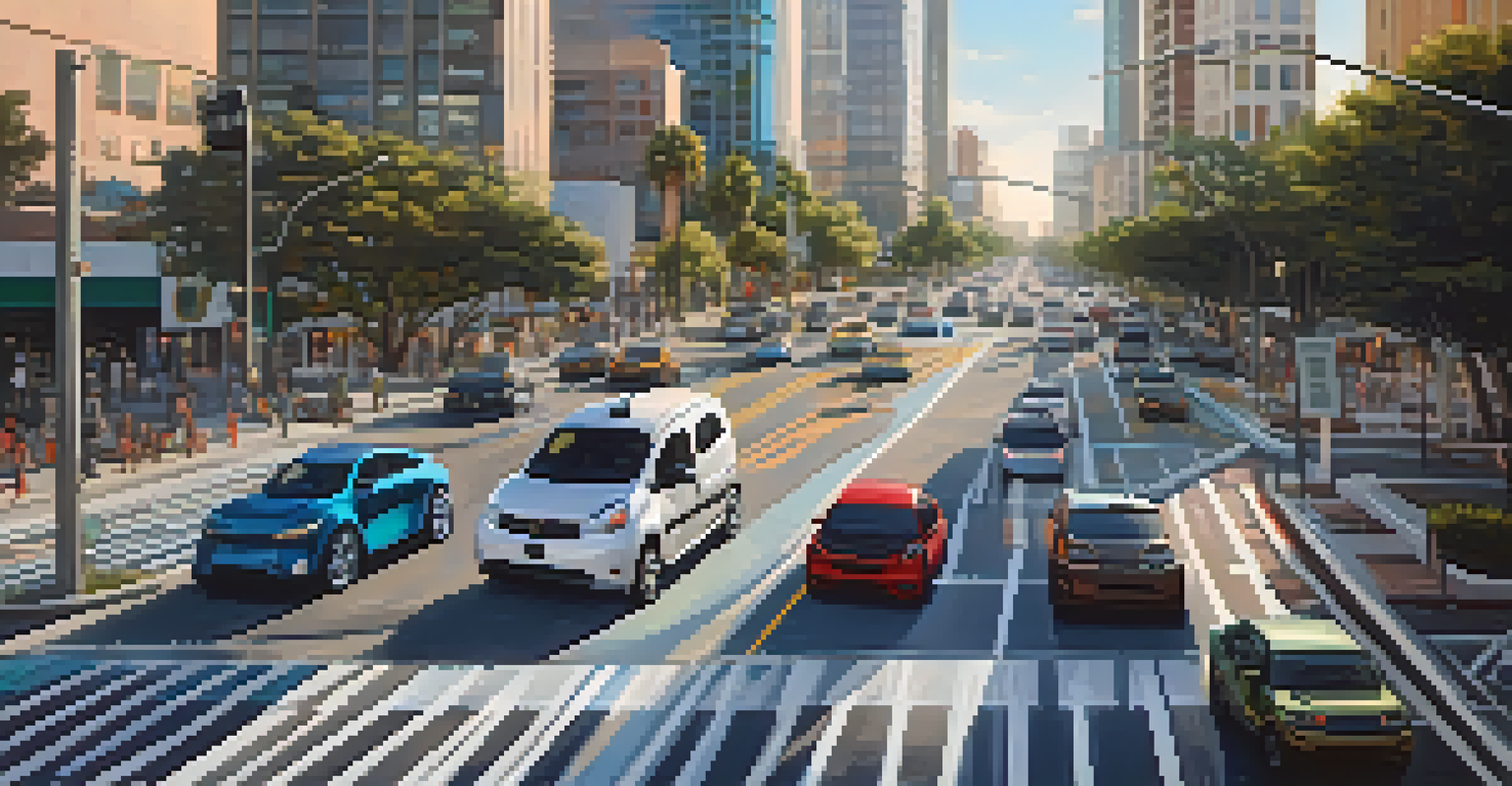The Evolution of Florida's Roadways: From Trails to Highways

The Early Trails: Pathways of Florida's Native Peoples
Long before cars and highways, Florida's landscape was crisscrossed by trails used by Native American tribes. These paths were often created for hunting, trading, and communication, reflecting the rhythms of the natural world around them. The trails were not just routes; they were vital lifelines that connected communities and facilitated cultural exchange.
The roads must roll, and the future is in the hands of those who build them.
As settlers began to arrive, they recognized the importance of these trails. Many of the early roads in Florida were established along these indigenous pathways, providing a foundation for future developments. This blend of Native American and settler routes laid the groundwork for the state's transportation network.
Understanding these early trails helps us appreciate the rich history and cultural significance of Florida's roadways. They remind us that even in our modern hustle, the essence of connection and movement has deep roots that began long before the automobile.
Colonial Roads: Building Connections in the New World
With the arrival of European settlers, the need for more structured roadways became apparent. Colonial Florida saw the establishment of roads that connected key settlements, facilitating trade and communication. These roads were often rudimentary, made from packed earth, but they represented a significant step towards organized transit.

During this time, the roads were primarily focused on connecting ports and towns to support the growing economy. They were critical in transporting goods like citrus and timber, which became staples of Florida's economy. The development of these roads also played a role in the expansion of settlements throughout the state.
Native Trails Shaped Florida's Roads
Florida's early Native American trails laid the foundation for the state's modern transportation network.
These colonial roads were the backbone of early Floridian life, linking communities and encouraging growth. They were the first glimpse of how Florida's roadways would evolve, paving the way for future advancements in transportation.
The Rise of the Automobile: A New Era of Travel
The early 20th century marked a monumental shift with the rise of the automobile. As cars became more accessible, the demand for better roads surged. This period saw significant investments in infrastructure, leading to the development of paved roads that could support the growing number of vehicles on the road.
Roads are a record of those who have gone before. Trails are the stories of those who will come after.
The introduction of highways transformed Florida's roadways, making travel faster and more efficient. The creation of the Dixie Highway in the 1910s was a landmark development, linking Florida to the rest of the country. This highway not only facilitated local travel but also attracted tourists eager to explore Florida's sunny shores.
As cars became a staple of American life, Florida's roadways adapted to meet the needs of this new era. The transition to automobile travel changed the landscape, making it essential for the state to rethink how people navigated its diverse terrain.
The Interstate System: Connecting Florida to the Nation
The 1950s ushered in the Interstate Highway System, a monumental project that revolutionized travel across the United States. Florida was not left behind; the creation of Interstate 95 and Interstate 75 connected the state to major urban centers and facilitated increased commerce. This development marked the beginning of a new, faster way for people and goods to move around the state.
The Interstate System also had a profound impact on tourism, making it easier for visitors to access Florida's attractions. With quick access to beaches, theme parks, and natural wonders, tourism flourished, contributing significantly to the state's economy. The ease of travel encouraged more people to explore all that Florida had to offer.
Interstate System Boosted Tourism
The development of the Interstate Highway System revolutionized travel, making Florida more accessible to tourists.
The Interstate Highway System fundamentally changed the dynamics of Florida's roadways, turning the state into a hub of activity. It established a network that connected communities and promoted economic growth, solidifying Florida's place as a key destination in the nation.
Modern Roadway Innovations: Technology Meets Transportation
As technology advances, Florida's roadways have also evolved to incorporate innovative solutions. These modern enhancements include smart traffic management systems and real-time navigation apps that help ease congestion and improve safety. The integration of technology into transportation reflects a commitment to creating a more efficient roadway experience.
Additionally, Florida has invested in sustainable practices, such as expanding public transportation options and promoting electric vehicle use. Bike lanes and pedestrian-friendly pathways have also become essential components of roadway planning, reflecting a shift towards more inclusive transportation systems. These developments are designed to reduce traffic and minimize environmental impact.
Innovation is now at the forefront of Florida's roadway planning, ensuring that the state's transportation network is not only effective but also sustainable. As we look to the future, these advancements promise to shape the way Floridians and visitors navigate the state.
Challenges Ahead: Managing Growth and Sustainability
Despite the advancements in Florida's roadways, challenges remain. Rapid population growth has led to increased traffic congestion, putting pressure on existing infrastructure. As more people move to the state, it becomes crucial to find solutions that can accommodate this growth without compromising quality of life.
Sustainability is another pressing issue. With climate change and environmental concerns on the rise, Florida faces the challenge of building roadways that support both development and ecological preservation. Balancing these interests requires innovative planning and collaboration among stakeholders.
Future Focus on Sustainable Transport
Innovations in roadway technology and a push for greener options are shaping the future of Florida's transportation.
Addressing these challenges will be vital for Florida's future. By prioritizing sustainability and smart growth, the state can continue to evolve its roadways in a way that meets the needs of its residents and the environment.
The Future of Florida's Roadways: A Vision Ahead
Looking ahead, the future of Florida's roadways is filled with potential. Emerging technologies, such as autonomous vehicles and smart infrastructure, promise to redefine the driving experience. These innovations could lead to safer, more efficient roads that adapt to real-time conditions.
Moreover, the push for greener transportation options continues to grow. Investments in electric vehicle charging stations and expanded public transit options indicate a shift towards a more sustainable transportation ecosystem. This focus on the environment aligns with broader global efforts to combat climate change.

As Florida's roadways evolve, they will continue to reflect the state's dynamic culture and commitment to progress. The journey from trails to highways is not just a historical narrative; it's a living story that will adapt and thrive in the years to come.